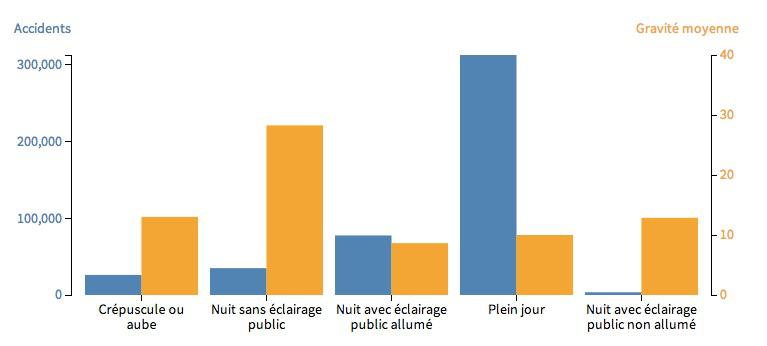Household Plastic Chemicals: Potential Risk Factor For Cardiovascular Disease

Table of Contents
Identifying the Culprits: Common Household Plastic Chemicals and Their Impact
Many common household plastics contain chemicals that have raised concerns about their impact on health. Key culprits include Bisphenol A (BPA), phthalates, and polyvinyl chloride (PVC), all of which are endocrine disruptors, meaning they interfere with the body's hormone system. These chemicals are frequently found in various household items, including:
- Food containers: Many plastic food storage containers, particularly older ones, may contain BPA.
- Water bottles: Some reusable water bottles are made from plastics containing BPA or phthalates.
- Food packaging: Processed food and canned goods often rely on plastic packaging that may leach chemicals into the food.
- Toys: Children's toys, especially older ones, might contain phthalates or PVC.
Let's look at the specific impact of these chemicals:
-
BPA (Bisphenol A): Studies suggest BPA disrupts hormone function, potentially influencing blood pressure, cholesterol levels, and inflammation – all key risk factors for heart disease. Some research links BPA exposure to increased risk of atherosclerosis (hardening of the arteries).
-
Phthalates: These chemicals are often used to soften plastics. Exposure to phthalates has been associated with adverse effects on blood lipid profiles (increased cholesterol and triglycerides), as well as elevated blood pressure, both significant contributors to cardiovascular disease.
-
PVC (Polyvinyl Chloride): PVC production and use release dioxins, persistent organic pollutants linked to inflammation. Chronic inflammation is a significant driver of cardiovascular disease, suggesting a potential link between PVC exposure and heart health problems.
The Mechanisms of Harm: How Household Plastics Contribute to Cardiovascular Risk
The harmful effects of household plastic chemicals on cardiovascular health are believed to be mediated through several biological pathways:
-
Inflammation: Many of these chemicals trigger inflammation throughout the body. Chronic inflammation damages blood vessels, contributing to atherosclerosis and increasing the risk of heart attack and stroke.
-
Oxidative Stress: Exposure to certain plastic chemicals can increase oxidative stress, an imbalance between the production of free radicals and the body's ability to counteract them. Oxidative stress damages cells, including those lining blood vessels, further promoting cardiovascular disease.
-
Endothelial Dysfunction: The endothelium, the inner lining of blood vessels, plays a crucial role in regulating blood pressure and blood clotting. Exposure to endocrine disruptors like BPA and phthalates can impair endothelial function, leading to increased blood pressure and a higher risk of thrombosis (blood clots).
-
Hormone Disruption: These chemicals interfere with the body's delicate hormonal balance. Hormones play a vital role in regulating many cardiovascular functions, and disruption of this balance can negatively impact heart health, potentially increasing the risk of hypertension and other cardiovascular problems. The impact on lipid profiles – influencing cholesterol and triglyceride levels – is also a major concern.
Minimizing Exposure: Practical Steps to Protect Your Cardiovascular Health
While completely eliminating exposure to these chemicals is challenging, we can take significant steps to minimize our risk:
-
Choose BPA-free and phthalate-free products: Look for products clearly labeled as BPA-free and phthalate-free. However, be aware that "BPA-free" doesn't guarantee the absence of other potentially harmful chemicals.
-
Opt for reusable glass or stainless steel containers: Replace plastic food storage containers with glass or stainless steel alternatives. These materials are inert and do not leach chemicals into food.
-
Avoid heating food in plastic containers: Many plastics release chemicals when heated, so avoid microwaving or heating food in plastic containers.
-
Wash plastic containers properly: Thoroughly wash and dry plastic containers to reduce the potential for chemical leaching.
-
Explore plastic-free alternatives: Consider switching to plastic-free alternatives for various household items, such as bamboo utensils, reusable cotton bags, and wooden toys.
-
Support legislation that restricts harmful plastic chemicals: Advocate for policies that limit the use of harmful chemicals in plastics.
Conclusion
Exposure to household plastic chemicals, including BPA, phthalates, and PVC, may contribute to cardiovascular disease through mechanisms such as inflammation, oxidative stress, endothelial dysfunction, and hormonal imbalance. By making conscious choices about the plastics we use and opting for safer alternatives, we can significantly reduce our exposure and protect our cardiovascular health. Take proactive steps to minimize your exposure to household plastic chemicals and protect your heart. Choose safer alternatives, opt for sustainable products, and make informed decisions about the plastics you bring into your home. Learn more about reducing your exposure to harmful household plastic chemicals and protecting your heart health today!

Featured Posts
-
 Olivia Wilde 40 And Dane Di Liegro 36 Relationship Update After Lakers Game Outing
Apr 30, 2025
Olivia Wilde 40 And Dane Di Liegro 36 Relationship Update After Lakers Game Outing
Apr 30, 2025 -
 Plus De Glissieres Moins D Accidents Evaluation De L Impact Sur La Securite Routiere
Apr 30, 2025
Plus De Glissieres Moins D Accidents Evaluation De L Impact Sur La Securite Routiere
Apr 30, 2025 -
 Planificacion Del Asiento Para Un Funeral Papal Una Empresa Compleja
Apr 30, 2025
Planificacion Del Asiento Para Un Funeral Papal Una Empresa Compleja
Apr 30, 2025 -
 The Trump Administrations Impact On Nvidia A Comprehensive Analysis
Apr 30, 2025
The Trump Administrations Impact On Nvidia A Comprehensive Analysis
Apr 30, 2025 -
 2025 12
Apr 30, 2025
2025 12
Apr 30, 2025
